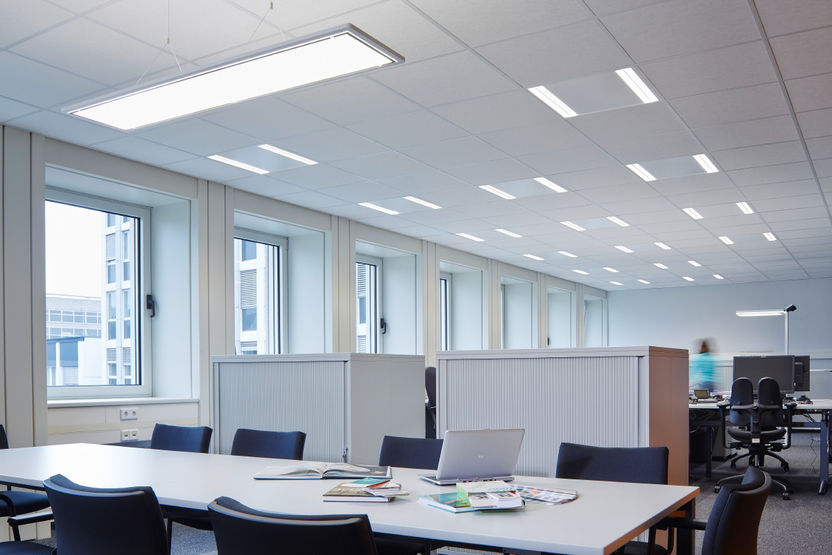
Limitation of glare

Glare is caused by bright surfaces in the field of vision. There is a distinction between:
Physiological glare: glare leading to a decrease in visual faculty, e.g. contrast sensitivity (contrast perception) or shape recognition (visual detail perception).
Psychological glare: glare which is only rated for the criterion of perceived disturbance. Psychological glare over extended periods of stay in a room leads to premature fatigue and a decrease in performance, activation and comfort.
Direct glare: glare which is caused directly by luminaires or luminous ceilings.
Reflected glare: glare which is caused by reflections on reflective surfaces. It is also known as veiling reflection.
Glare must not be caused by lamps or luminaires (direct glare) nor by reflections of high luminance values on glossy surfaces (reflected glare). In special cases, e.g. when lighting entrance halls or festive spaces, higher and stimulating luminance values and increased contrast to the surroundings can be desirable as long as the light sources serve primarily as decorative elements.
In order to avoid mistakes, fatigue and accidents, it is important to limit glare. At indoor workstations, psychological glare can be caused either directly by bright luminaires or by windows. As long as the limits for psychological glare are observed, there is usually no significant physiological glare either.